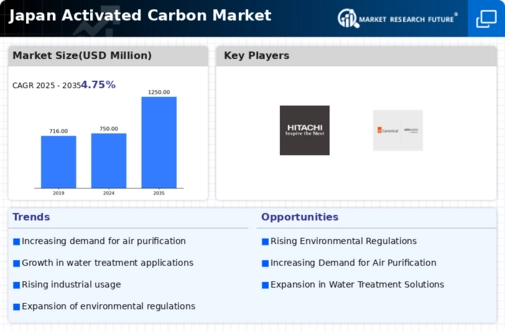The Japan Activated Carbon Market has seen a dynamic competitive landscape influenced by increasing environmental regulations, heightened awareness regarding water and air purification, and the growing demand for activated carbon in various industries. As a critical component in several applications, including filtration systems, medical applications, and industrial processes, activated carbon producers are vying for a share of this market. Innovation in manufacturing processes focuses on sustainable practices, and the development of high-performance materials are significant factors that define the competitive insights within this sector.
The players in the market are assessing consumer demands, regional growth challenges, and opportunities, crafting their strategic positioning to cater effectively to the evolving market landscape.Kuraray stands out in the Japan Activated Carbon Market thanks to its strong reputation and long-standing experience in the industry. The company is known for its commitment to quality and innovation, enabling it to maintain a competitive edge. Kuraray’s portfolio includes a variety of activated carbon products designed for diverse applications, which reinforces its strong presence in sectors such as air and water treatment.
The company's capability to cater to niche markets enhances its position, as it focuses on developing specialized solutions tailored to customer needs. Kuraray's emphasis on sustainability practices and product innovation further solidifies its market strength, allowing it to respond actively to the increasing scrutiny regarding environmental impact and safety standards within Japan.Mitsubishi Chemical Corporation represents another formidable player in the Japan Activated Carbon Market, showcasing a robust portfolio that emphasizes the quality and diversity of product offerings. The company’s activated carbon range is utilized in numerous applications, including industrial air treatment, water purification, and food processing.
Mitsubishi Chemical Corporation showcases its strengths through advanced production technologies and a commitment to research and development, ensuring its products meet stringent quality standards. The company is also involved in strategic partnerships and collaborations that enhance its market presence and expand its product offerings. With a clear focus on innovation and sustainability, along with potential mergers and acquisitions within the industry, Mitsubishi Chemical Corporation continuously aims to bolster its competitive position, thus reflecting its ability to adapt to changing market demands in Japan.













Leave a Comment